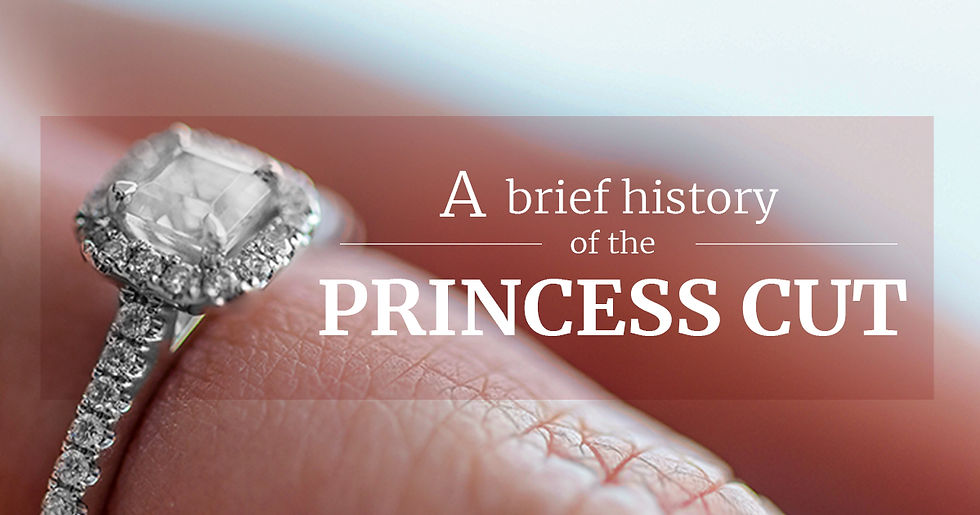A brief history of a Princess Cut
- fashionsydney
- Jun 22, 2018
- 2 min read

Rising quickly in popularity the princess cut engagement ring has become a must-have for brides today. Here is a brief insight into the princess cut and why brides are clamouring to get princess cut diamond set within their engagement and wedding rings this year!
Features
The princess cut carries a square shape – which is why its alternative name is known as the square modified brilliant cut. It most commonly contains 58 facets but can carry between 57 to 76 facets in total. The number of chevrons of a princess cut will differ (with a minimum of two) determining the overall effect that the diamond will portray. The crushed ice appearance that is often sort after with Princess cut diamonds in particular – comes from multiple chevrons being used.
Origins
The princess cut originated in 1961, where it was adopted by an already established profile cut by Arpad Nagy, a renowned cutter based in London. Nearly two decades later the term became popularised by Ygal Perlman, Betzalel Ambar and Israel Itzkowitz in Israel in 1979. The princess cut takes its inspiration from the early ‘French Cut’ where it displays a modified cross-cut section and distinctive chevron shapes which give it a distinctive cross reflection when viewed overhead.
Reason for popularity
Beyond the stunning beauty of the princess cut – it should be most noted that the princess cut is remarkably cheaper to fashion than the more popular round brilliant cut. This is because where the later takes a circular shape, the princess cut keeps to a square shape – meaning fewer cuts are needed to fashion the diamond. This means due to minor waste and the fact it is easier and quicker to cut – the diamond finds itself notably cheaper and yet does not sacrifice on quality.
Furthermore, as with most current trends adopted by fashion elite, the princess cut has been worn by several famous individuals such as:
• Kate Bosworth
• Hilary Duff
• Jaime Pressley























Comments